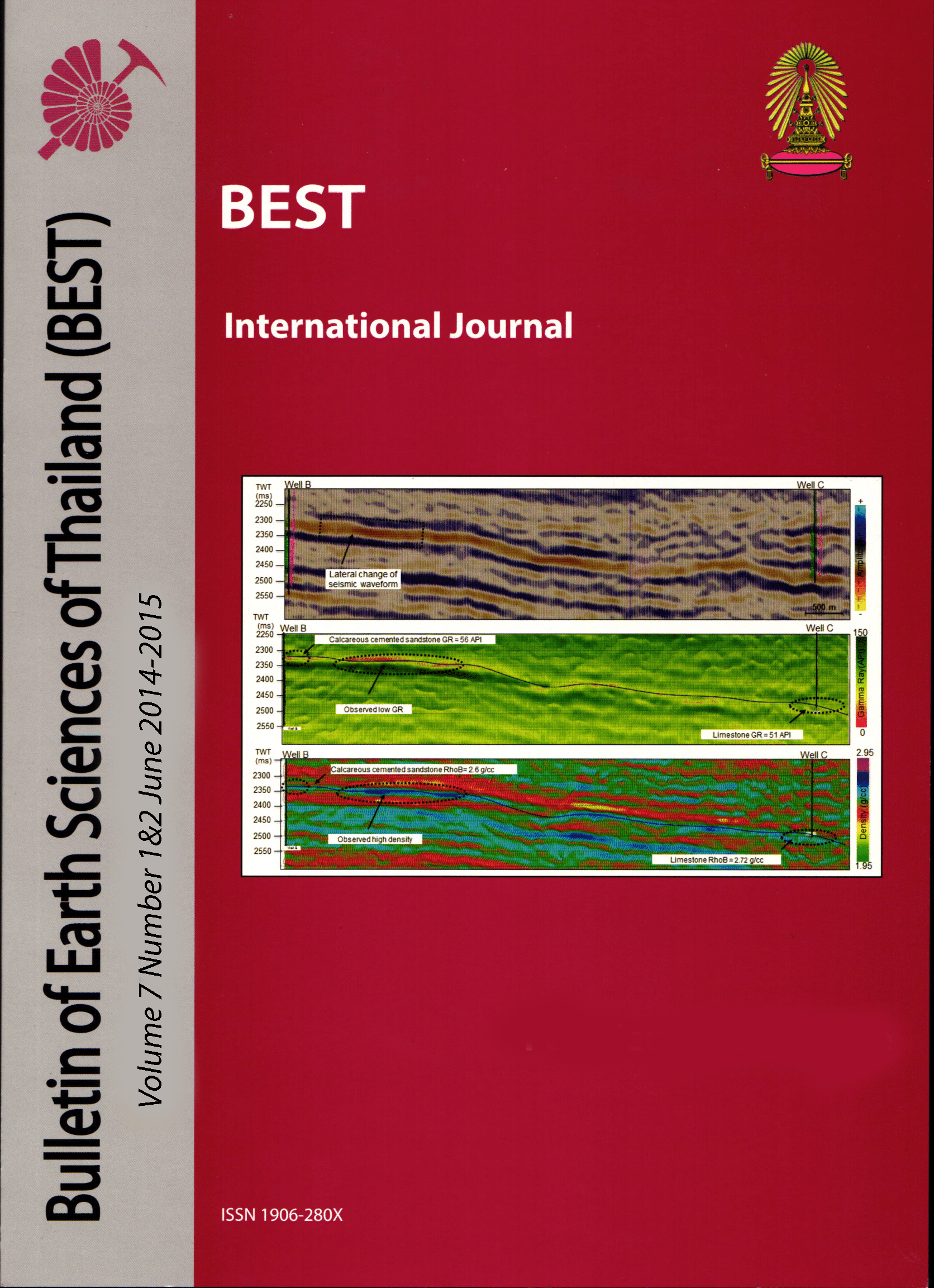ARCHITECTURE AND DEPOSITIONAL ENVIRONMENT OF FLUVIAL SANDS IN MORAGOT FIELD OF PATTANI BASIN, GULF OF THAILAND
Main Article Content
Abstract
Pattani Basin is one of the most prolific hydrocarbon producing basins of the Gulf of Thailand. The reservoirs in the Pattani Basin are Early to Middle Miocene fluvial channel and overbank sands. Owing to the nature of fluvial deposits, reservoir sands are both laterally and vertically restricted, hence it is not always possible to predict the geometry and distribution of these sands based on the conventional seismic interpretation. This study aims to predict sand distribution by applying advanced imaging techniques such as RMS amplitude analysis, spectral decomposition, semblance and dip steered similarity. At shallow stratigraphic levels, RMS and semblance successfully identified sand bodies and mud filled channels associated with channel belts. On the other hand, deeper stratigraphic levels can be imaged more effectively by using spectral decomposition and dip steered similarity volumes. These images show the distribution of sands and mud filled channels at different stratigraphic level. The width of channel belts varies from 200 m to 3 km. These channel belts are N-S or NW-SE oriented. The depositional environment analysis in the zone of interest was carried out on the basis of seismic geomorphology assisted by the well log data. Broad channel belts in horizon slices and stacked channel sands in well log in the Early Miocene (O to K interval) are suggestive of the fluvial depositional environment. Whereas narrow channel belts with the widespread occurrence of coals in the early Middle Miocene (K to D interval) suggests that the deposition occurred in marginal marine setting. Very well developed meander belts in horizon slices and fining upward succession in well logs suggest depositional environment in the rest of the Middle Miocene (D to B interval) was predominantly fluvial. Mud filled channels identified in the horizon slices might act as a barrier and compartmentalize the reservoir. The proposed workflow of sand prediction in this study might help to reduce exploration risk.
Article Details

This work is licensed under a Creative Commons Attribution-NonCommercial-NoDerivatives 4.0 International License.
Copyright © 2008 Department of Geology, Faculty of Science, Chulalongkorn University. Parts of an article can be photocopied or reproduced without prior written permission from the author(s), but due acknowledgments should be stated or cited accordingly.
References
Castagna, J., Sun, S. and Siegfried, R., 2002, The use of spectral decomposition as a hydrocarbon. The Gas Technology Institute, Fusion Geophysical, and the OU Geophysical Reservoir Characterization Consortium. V. 8, no. 3, p. 24-26.
Miall, A.D., 1992, Alluvial deposits, in R.G. Walker and N.P. James, eds., Facies Models: Response to Sea Level Change: Geological Association of Canada, p. 119-142.
Morley, C. K. and Racey, A., 2011, Petroleum geology. In: M.F. Ridd, A.J. Barber & M.J. Crow (eds.) The Geology of Thailand, Geol. Soc., London, p. 223-271.
Posamentier H.W. and Kolla, V., 2003, Seismic geomorphology and stratigraphy of depositional elements in deep-water settings. Journal of Sedimentary Research, VOL. 73, P. 367–388


